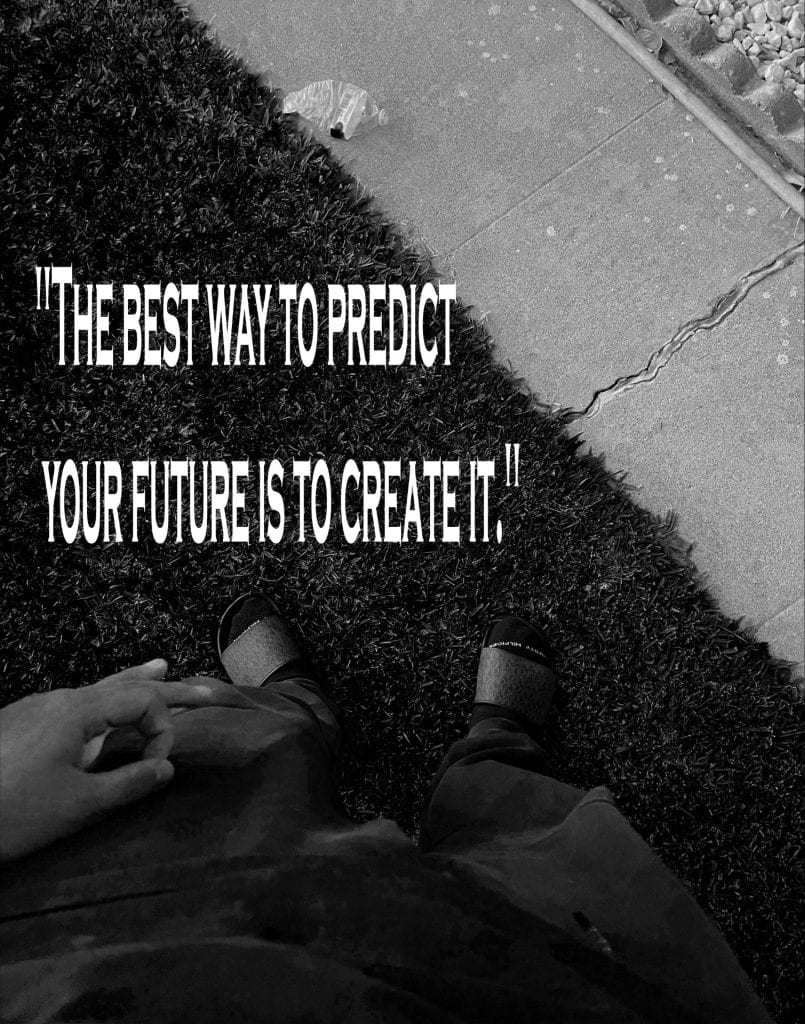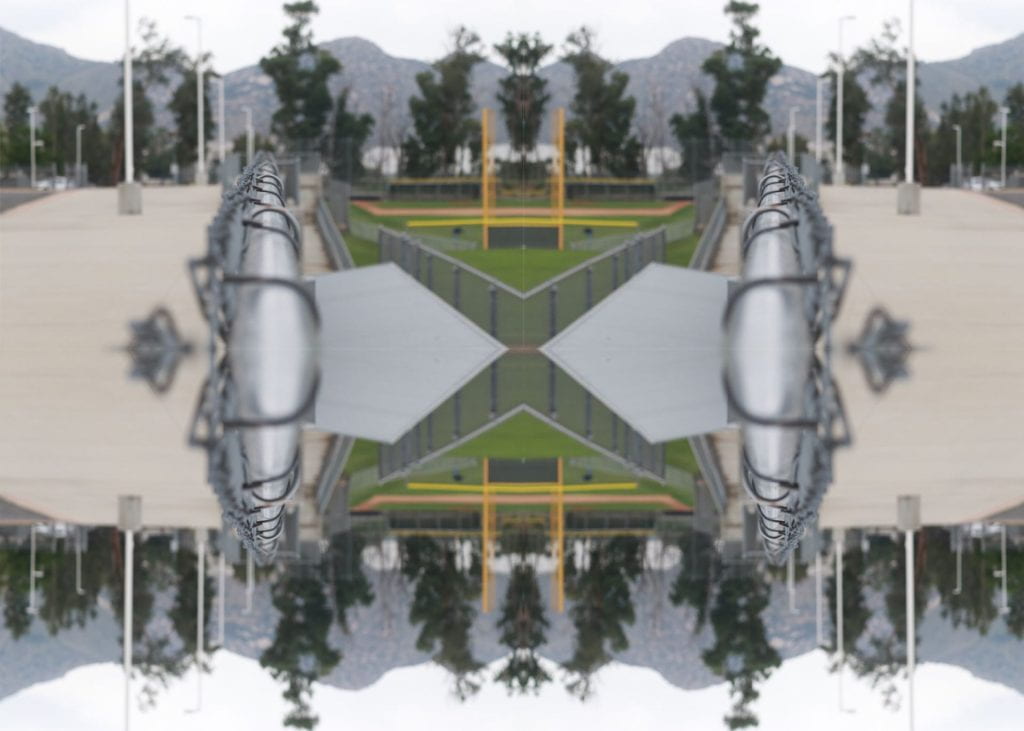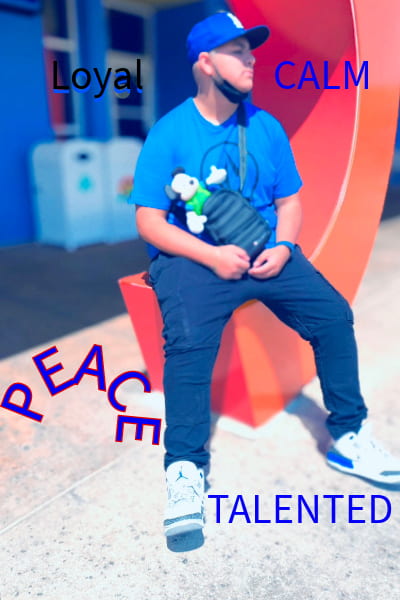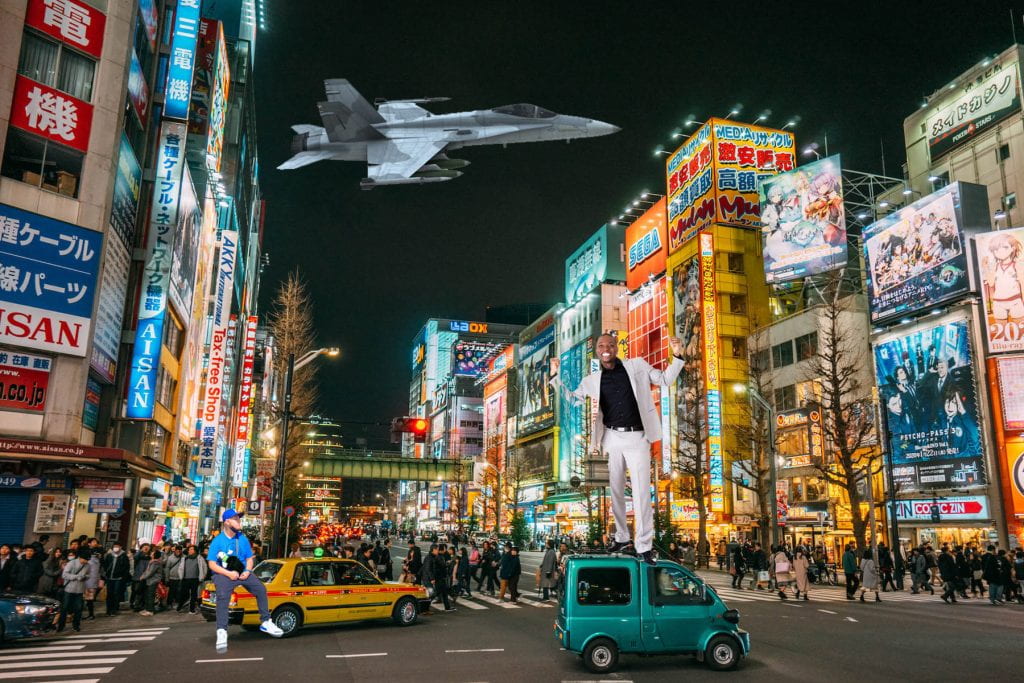This image has caught my eye because of the bright red colors and the how it’s all neatly organized.
POETRY AND PHOTOGRAPHY
Mirror Imagery
ARTIFICIAL INTELLIGENCE IN PHOTOGRAPHY
AI (Artificial Intelligence) is starting to be used in many different aspects of the world today. AI allows computers to do things that would normally require true human intelligence. Instead, we can now rely on artificial intelligence to complete tasks. AI exists in so many different places that you may not even realize.it is used to help improve the world in so many different ways today, even if you don’t realize it. If you’re a photographer, you may not even realize that your digital camera is harnessing the power of AI every single time you press the shutter. Using AI might be easier than you think, and there are more ways you can use AI than just for image editing. Photographers who run their own business can get great use out of AI in order to save time and expedite tasks that would normally eat away at your precious shooting time. there are many different ideas to use AI. If you’re a commercial photographer, your clients may want you to make a moodboard before your shoot. Even if you have the vision for the shoot already in mind, creating a moodboard takes time. Using AI technology in image generators is a great way to expedite the mood board creation process. No more browsing the web for hours on end trying to find a very specific image.
While there are a variety of different AI-based softwares that can aid photographers, we will cover a few of the best free tools that utilize artificial intelligence. Many websites (such as deepai.org) offer AI Image Generation. This allows you to create images simply by typing a few words. There are also many apps that allow you to do the same. Usually, you’ll put in a text prompt. The prompt can be as simple as a couple words, or as complex as a paragraph.If you have low resolution photos, software like AI Image Upscaler can help to increase the resolution of your photos. This can be beneficial if you need to crop an image down, blow up an image for print, or just want a higher resolution. This kind of AI Upscaler uses AI technology to create more pixels, in turn increasing the resolution of your photos. This particular upscaler made by StockPhotos even has FacePro, which recognizes and enhances faces to make them look fantastic in higher resolutions. AI Image Upscaler comes with three free upscales, and then you’ll have to pay if you like the software.
JPG vs RAW
The main difference between RAW vs. JPEG is that RAW contains all the uncompressed data your camera sensor can capture, whereas a JPEG is a compressed and processed version of an image.JPEG stands for Joint Photographic Experts Group, an international organization that standardized the format during the late 1980s and early 1990s. It’s the go-to file format for digital images — and it has been ever since photographers began snapping and storing images on digital cameras and other reprographic devices.A JPEG file can display 16.8 million colors while staying relatively small in size. That’s what makes it the go-to file for photographers and web publishers alike.
A RAW file contains all the uncompressed and unprocessed image data captured by the sensors of a digital camera or scanner. They’re also a type of raster file format, but one that maintains lossless quality. RAW files are not images — they’re just large files filled with the image data as it was captured.Professional and amateur photographers regularly debate whether shooting in JPEG or RAW is better. While both raster file formats share similarities, there are some key advantages and disadvantages to each type. Discover the differences between JPEG and RAW files.
The main difference between any JPEG and RAW file is its size. RAW files are significantly bigger than JPEG (and any other) image file formats.That’s because they contain all the raw image information captured by your digital camera’s sensors, completely uncompressed. Like working with a film negative from a traditional camera, the RAW file holds all the original detail, so you have complete control over what you do with it.
WHAT COLOR IS YOUR AURA?
TAKE A VACATION
WHAT EVERY BEGINNER NEEDS TO KNOW READ AND WRITE
1. Setting the exposure using the histogram, the best way to tell if your exposure is correct is by consulting the histogram.
2. Raw, shooting in RAW format will give you access to the full capabilities of your camera.
3. Selecting focusing points manually, your camera has the option of selecting the autofocus points for you, but it can’t always anticipate correctly. That’s why learning to change the AF points manually is a useful skill. It will improve focusing accuracy and reduce chances of missing important shots.
4. Learn all AF modes, most cameras come with different autofocus modes like One-shot AF, Servo AF and AI Autofocus. All of these modes have different uses, depending on subject and situation. The one-shot mode will stop refocusing once it’s locked onto the subject. It will remain locked as long as you hold your finger on the shutter release, half pressed.AI- Servo AF mode won’t lock the focus and it will constantly refocus. It is a great focusing mode for sports and other fast-moving subjects.AI focus will automatically from one -shot to Servo if it detects movement in the frame.
5. Aperture Priority camera will vary the exposure settings depending on the aperture value you set. Having complete control over aperture means control over depth of field. This is a great setting for shooting portraits with a blurred background.
6. Shutter Priority The shutter priority mode works just like aperture priority, in the sense that it gives you complete control over shutter speed while making all the other settings automatically. This is a great setting for situations where you don’t want the shutter speed to go over or under a specific value.
7. Control motion Blur Motion blur often comes from using a shutter speed that is too slow for holding the camera in your hands. Every photographer has a maximum low speed they can use.
8. Manual white balance All digital cameras have a few white balance presets. While they can do a fairly decent job, we recommend learning to set white balance manually, according to each lighting situation.
9. This isn’t a major setting, but you never know when you’re going to have driven modes. Essentially, there are three of them: single shot, continuous low and continuous high. The first mode obviously allows you to shoot one frame at a time. It great for studio work or when shooting anything you have complete control over. CL is great for portraits when you have an expressive model and don’t want to miss any interesting faces. CH is the shooting mode for sports, wildlife and anything that moves fast.
10. ISO Higher ISO values are needed for working in low light. Just keep the noise levels in mind.
External Flash Worksheet
When would you use external flash? When you want to fill in shadows or add light to your subject in a dark or low-light setting.
Do you need to meter the light if you use flash? Yes, you need to meter the light if you use flash, unless you want to rely on the camera’s automatic settings.
What does flash synchronization mean? Flash sync is a computer-controlled system that synchronizes your flash and shutter release.
What does ETTL mean? ETTL can mean different things depending on the context. In photography, it stands for Evaluative Through-The-Lens, an auto flash mode that improves exposure.
What will happen when you shoot faster than the camera sync speed? Black bands are the result of your shutter curtain blocking a part of the image during the exposure. This is what happens when you use shutter speeds higher than the sync speed.
Why do photographers bounce the flash and use a diffuser? Bounce flash diffusers provide a different approach to softening the light.
What is a slave? A slave (optical slave) is a device that’s connected to another flash or large strobe that triggers that device to fire when it “sees” another flash firing.
What should you do if your image comes out too dark or too light? You can use the exposure compensation setting on your camera to correct for under or over exposure.
INTRODUCTION TO USING STROBES
Stands and grips are used to support your light sources, strobes, and even light modifiers or backdrops.
Reflecting umbrellas produce a diffused and soft light due to the larger size of the reflecting surface. They are mounted in such a way that the strobe light is actually facing away from the subject or model.
Most strobe lights allow you to completely remove the reflector and attach different kinds of light modifiers.
Wide reflectors produce a larger pool of light and a softer light quality, narrow reflectors produce smaller pools of light and a harsher light quality.
If you’re shooting outdoors or with complicated modifier setups, you are going to need a lot of power to overcome the sun, or the light loss caused by the modifiers.
Head/pack systems have a big advantage in the power department. Whereas, if you’re shooting indoors or inside your studio, monolights will probably be more than enough for regular work.
Head/power pack kits also offer faster flash durations than monolights, which can really come in handy when you want to freeze action during fast motion. They also have faster recycle times.
Professional studio light sources generally fall into one of two categories: you can get a kit with a flash head and a power pack, or you can get a monolight kit.
Symmetric power packs split power equally between multiple flash heads.
Assymetric power packs allow the user to vary the power supply to different flash heads.




